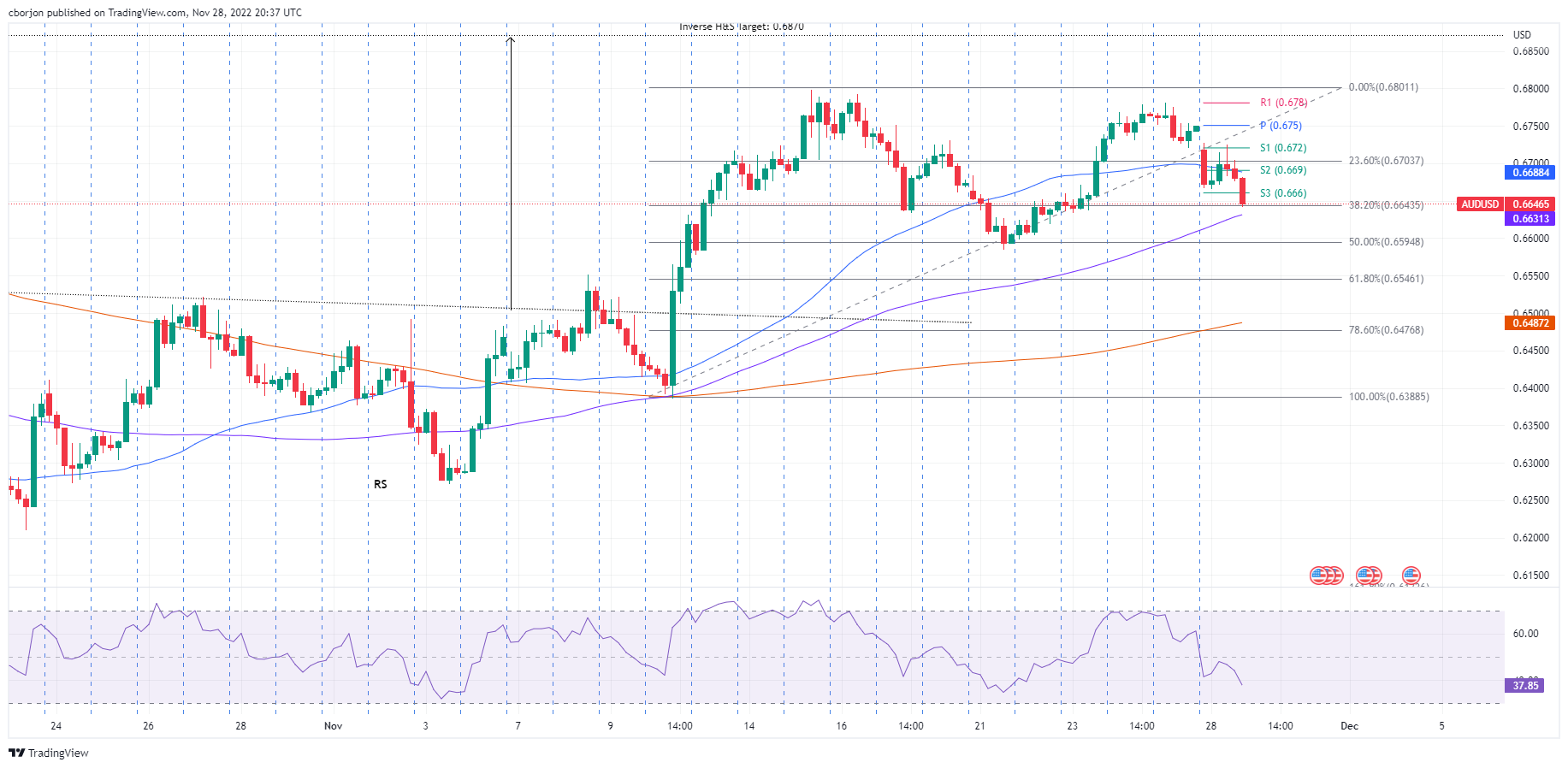AUD/USD plummets below 0.6700 due to risk aversion, Fed commentary
- US Dollar got bolstered by Federal Reserve policymaker’s hawkish commentary.
- New York Fed John Williams expects rate cuts by 2024.
- Weaker Retail Sales in Australia and protests in China weighed on the Australian Dollar.
- AUD/USD Price Analysis: Short-term downward biased, eyeing 0.6600.
The Australian Dollar (AUD) plunges as the week begins due to Federal Reserve (Fed) officials’ hawkish commentary, risk aversion spurred by China’s Covid-19 riots, and a weaker-than-expected retail sales report from Australia. Therefore, the US Dollar (USD) is appreciating, as shown by the US Dollar Index (DXY). At the time of writing, the AUD/USD is trading at 0.6650, below its opening price by 1.50%.
Federal Reserve officials to keep hiking rates, eyeing cuts in 2024
Investors’ sentiment remains negative. Federal Reserve officials said that additional rate hikes are needed. St. Louis Fed President James Bullard said the Fed needs to keep increasing rates until 2023. He commented that rates must reach the low end of the 5%-7% rate range, adding that a recession is not inevitable. Echoing some of his comments was the New York Fed President John Williams commenting that he expects inflation to fall to 5.0%-5.5% by the end of 2022 and 3.0%-3.5% by late 2023 and noted that the baseline forecast does not predict a recession for the US. However, traders should know that Williams said the Fed could reduce rates in 2024.
Traders should remember that the Federal Reserve Open Market Committee (FOMC) minutes for the last meeting indicated that “A substantial majority of participants judged that a slowing in the pace of increase would likely soon be appropriate,” cementing the Fed’s moderating interest rates.
China’s Covid-19 riots and weak Australian retail sales weighed on the AUD
Aside from this, protests in China related to Covid-19 lockdowns and mass testing, and fears that if it escalates might derail the global economy, weighed on investors’ mood. According to Bloomberg, “the protests are shaping up one of the biggest threats to the Communist Party since the 1989 Tiananmen crackdown,” keeping investors on their toes.
During the Asian session, Australia’s Retail Sales for October fell by 0.2% MoM vs. estimates of a 0.5% expansion, portraying a more “cautious consumer spending mood after 9 straight months of increase,” according to TD Securities analysts.
“However, sales are still robust on an annual basis at 12.5% y/y. Given the rapid rise in interest rate, household budgets are under pressure, and this is starting to be reflected in the slowdown in consumer spending,” TD analysts wrote.
What to watch
An absent Australian economic calendar will leave traders adrift to US Dollar dynamics. On the US side, the S&P/Case-Shiller Home Prices for September and the Conference Board (CB) Consumer Confidence for November will offer a fresh catalyst to AUD/USD traders.
AUD/USD Price Analysis: Short term
The AUD/USD 4-hour chart suggests that sellers are gathering momentum, pushing prices toward the 38.2% Fibonacci retracement at 0.6643. Additionally, the Relative Strength Index (RSI) dropped to bearish territory, exacerbated by weak Aussie economic data and the AUD/USD exchange rate falling beneath 0.6700. Therefore, the AUD/USD path of least resistance is downwards.
Therefore, the AUD/USD first support would be the 100-Exponential Moving Average (EMA) at 0.6631. Break below will expose the 50% Fibonacci retracement at 0.6594, followed by the 61.8 Fibonacci level at 0.6546. on the flip side, the AUD/USD first resistance would be 0.6700. A breach of the latter will expose the 0.6720 S1 daily pivot-turned-resistance, followed by the daily pivot at 0.6750.







